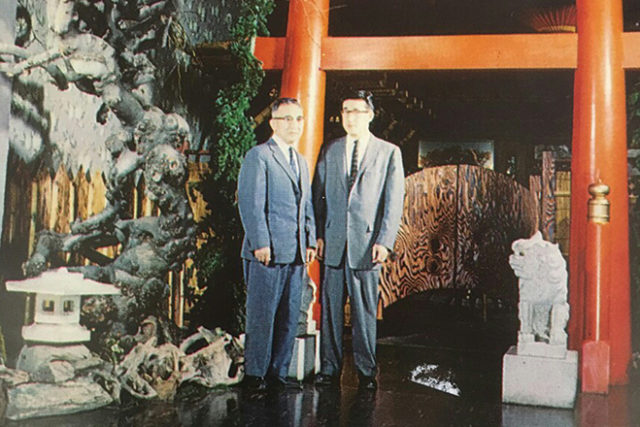Long ago, Seattle’s Japanese restaurants used to be mostly in the International District. Those days are long gone. Today’s restaurateurs are bringing sushi and ramen and Japanese comfort food to neighborhoods like Wallingford, Queen Anne and Capitol Hill as well as the ID. Let’s meet some of the people behind this Japanese cuisine boom.
- Seattle’s Japanese Restaurateurs TOP
- Shinichiro Takahashi, Ten Sushi Owner Chef
- Jun Yoneda, Plenty USA CEO
- Yuta Sugimoto, Safari USA President
- Masae Fukuyama, Kozue Restaurant Owner
- Restaurant pioneers laid foundation for culinary newcomers
Restaurants are opening and closing at an alarming pace in Seattle and Bellevue. Old favorites are saying goodbye, but in their wake a slew of new restaurants are bringing new twists on old favorites. Nowhere is that more apparent than with Japanese cuisine. We say goodbye to grand old dames like Bush Garden and hello to W’az (411 Cedar St.), a haute kaiseki restaurant run by Hiro Tawara, and Junkichi (224 Broadway E), a robatayaki restaurant in Capitol Hill. If you don’t know what “kaiseki” or “robatayaki” mean, well, that’s part of the fun. New offerings are tickling our palates (and wallets) in different ways.
But can we catch our breath for a moment and acknowledge the pioneers who made this all possible? Some of those pioneers, like Maneki and Shiro Kashiba in Seattle and I Love Sushi in Bellevue, are going strong. Others are heading off into the sunset. And all of them are responsible for creating the fountainhead from which all this new cuisine flows.
Maneki Restaurant (304 6th Ave S) opened in 1904. At one point, “The Castle,” as it was nicknamed, could seat 500 people! During the internment, the restaurant was ransacked and left in ruins, but once the war ended, a group brought the restaurant back to life, and thank goodness they did. In 1970, Maneki was the first restaurant in Seattle to offer a full-service sushi bar manned by the then up-and-coming Shiro Kashiba. Today, he presides over Sushi Kashiba (86 Pine St.) in Pike Place Market, the premier sushi bar in the city and one of the best in the country, and his old restaurant, Shiro’s (2401 2nd Ave.) in Belltown, is still going strong. What’s more, former apprentices of Kashiba such as Taichi Kitamura of Sushi Kappo Tamura (2968 Eastlake Ave. E) and Tawara lead a generation of young, innovative chefs more at home in American society than some of their elders.

These young chefs owe much to the hard-scrabble resilience of people like Kaichi Seko, who, after being imprisoned by his own government at Minidoka, ran the original Bush Garden in the Bush Hotel from 1953 to 1956. He recruited his son, Roy, and Roy’s new bride, Joan, to open a new Bush Garden Restaurant, which became one of the great restaurants in Seattle history. When Roy asked Joan if she would run the restaurant with him, she replied, “As long as I don’t have to cook.” She ended up running the restaurant with her husband for 47 years.
Bush Garden opened on June 9, 1957, with Joan and Roy’s wedding party. It blossomed into the biggest restaurant in the US, at one point seating as many as 450 patrons. Hollywood stars, Japanese royalty and famous athletes would dine there. Joan Seko recalls staying open late for two weeks to serve Vic Damone, Jane Powell and their entourage. Joe Dimaggio dined there. “We had a bar girl, Sachiko, who went to the movies four times a week,” Joan recalls. “She loved Hollywood. One night, David Janssen (star of ‘The Fugitive’) came in, and I told her to wait on him. She couldn’t move. I had to get another waitress!”

Bush Garden was also where Seattle was introduced to karaoke. Seko says the bar was the first to offer karaoke in the US. After decades of listening to people sing, she says one rule holds true: “The good ones sing one song. The bad ones go on and on.”
An exhibit currently on display at the Japanese Cultural and Community Center of Washington (JCCCW) focuses on the life of Issei pioneer Genji Mihara, who ran the Occidental Cafe from 1919 until 1942 in what is now Pioneer Square. At that time, Japantown extended into the current Pioneer Square. Mihara arrived in Seattle in 1907 looking for a better life. The Occidental was a mainstay for the Japanese American community until Executive Order 9066 effectively closed the cafe forever.
Today, as Americans become familiar with terms like “izakaya” and “kaiseki” and start to be able to tell the difference between Hokkaido and Kyushu ramen, we should acknowledge that this culinary blossoming is made possible because of the deep roots established by the Miharas, the Sekos and many other pioneering restaurateurs who have been feeding us delicious Japanese cuisine for decades. They deserve a resounding “gochisoo sama deshita” from all of us.







